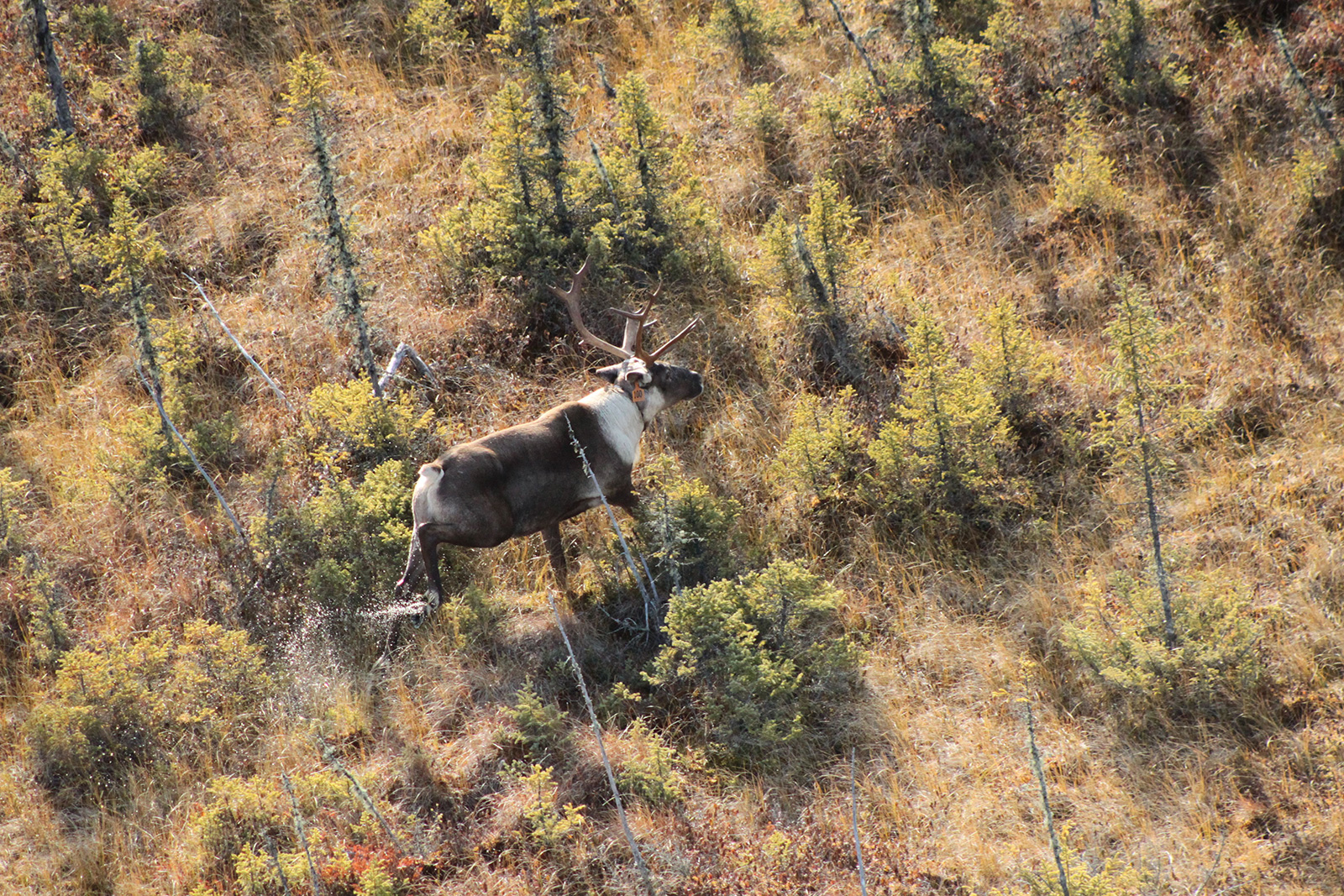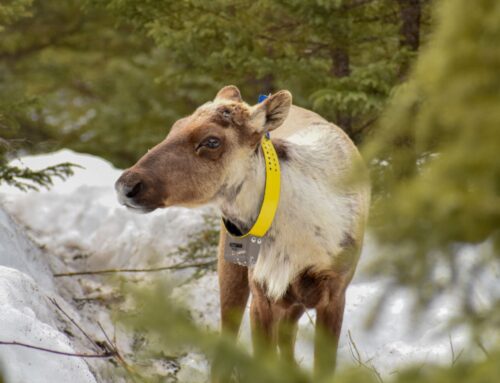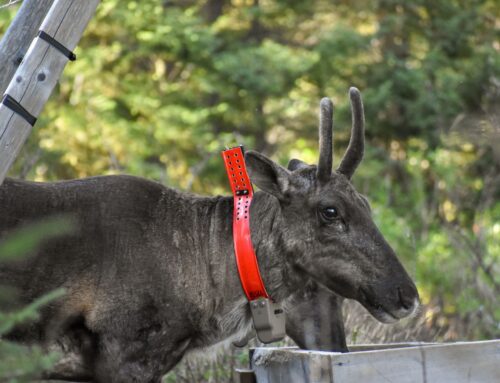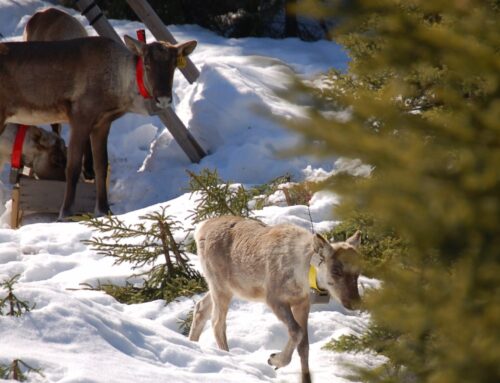Source: Le Devoir
Published on February 18, 2020
As the caribou of Val-d’Or are on the verge of extinction, the Legault government recently announced the continuation of studies that should lead to the tabling of a “strategy” to prevent their disappearance. However, Quebec has in hand two detailed analyses, produced at the request of the Ministère de la Faune, that demonstrate what must be done to save the herd. One of them has been in the hands of the government for more than three years.
The small, isolated population of woodland caribou in the Val-d’Or region has not exceeded 50 animals since the 1980s, despite the “forest management plans” that have been put in place for a small portion of their habitat that has been heavily disturbed, mainly by forestry and mining activities. There were only about twenty of them at the beginning of the 2000s, a total of 18 at the time of the 2016 census and barely seven at the time of the January inventory.
The Ministère des Forêts, de la Faune et des Parcs (MFFP) recently unveiled “exceptional measures to protect the caribou” in Val-d’Or. These include “temporary enclosures” for the last deer to protect them from predators.
At the same time, the Minister responsible for the MFFP, Pierre Dufour, announced “the continuation of the meta-study process in collaboration with a consortium of university scientists, which will be delivered in March 2021”. This “meta-study” should lead to the “submission of the strategy”, but no date has yet been set.
Two studies
This announcement by the Legault government comes at a time when the MFFP already has two scientific analyses of the situation of the Val-d’Or caribou, one of which specifies the “scenarios” that could save the herd from extinction.
The “Feasibility Study for the Recovery of the Val-d’Or Caribou”, obtained under the Access to Information Act, dated January 2017 and to which 25 experts from the MFFP collaborated, details the procedure to be followed to maximize the chances of reducing the herd to a minimum of 50 animals, the threshold “for a population to be at lower risk of extinction”.
In concrete terms, the experts insist on the need to considerably restore the animals’ habitat by reforesting forest roads and doubling the area of land where logging is prohibited (from 1000 km2 to 2000 km2 ). It would also be necessary to limit industrial logging on the periphery of this zone of strict protection.
Eventually, with these measures that would reduce the “disturbance” of the habitat, “the chances of caribou persistence are 60% to 90%”.
Furthermore, in order to replenish the herd, MFFP experts emphasize the need for fencing to protect the caribou from predators. Caribou from another population in the area would then have to be captured and taken to the Zoo sauvage de Saint-Félicien to be reproduced in captivity, before reintroducing the calves into the habitat. According to the 2017 MFFP document, the zoo would thus become a “caribou nursery”.
The management of the facility was even willing to “share the costs associated with this project” and the enclosures were already built.
This optimal “scenario” would result in “estimated costs” of about $14 million, according to the government study, including “additional impacts on allowable cut”.
Disappearance
In April 2017, the Liberal government announced a simple project to relocate caribou from Val-d’Or to the Saint-Félicien Zoo, but without providing a recovery program, as suggested by its own experts. The project was finally abandoned and the Liberals announced in March 2018 that the caribou were doomed to disappear.
After the Legault government came to power, Minister Pierre Dufour asked for, and obtained, a new “project” to save the Val-d’Or caribou,” explains Action boréale’s president, Henri Jacob. This plan also proposes to combine habitat restoration with a program to reintroduce animals to this isolated herd.
The plan was produced at the request of Minister Pierre Dufour. But since then, he has never followed up on the plan, said Jacob. Time is running out, he insists. “It is impossible for the animals to survive unless a reintroduction plan is put in place. We don’t even know if there’s a male left. »
According to him, the recently announced penning of caribou is “improvisation“, in particular because it would be impossible to feed the caribou.
For biologist Pier-Olivier Boudreault of the Society for Nature and Parks, the Legault government is simply “dithering”, waiting for the caribou to disappear from the herd. “The government is commissioning a study it already has that clearly identifies the scenarios for saving the caribou. Either it admits its mismanagement, lets the caribou die in peace and prevents it from happening again elsewhere, or it makes every effort immediately to restore the population. »
Why pursue a “meta-study” when the MFFP already has two scientific analyses in hand that specify the scenarios to be considered in order to avoid the extinction of these cervids?
The Minister wants local stakeholders to be involved in the solutions that will be selected. This is why we plan to discuss the issue with the Department’s main partners in the file, namely the Algonquin communities (mainly the Council of the Anishnabe Nation of Lac-Simon) and members of the Regional Operational Group. Proposals are expected in the coming months, the Ministry replied by e-mail.
The “Regional Operational Group” for the Val-d’Or region has seven members, according to information provided by the MFFP, including EACOM Forestry, Agnico-Eagle Mining and the Quebec Mineral Exploration Association.
The example of Charlevoix
The reintroduction of woodland caribou in Quebec has already been a success in the Grands-Jardins area of Charlevoix. Cervids, which had completely disappeared in 1920, were reintroduced there in the early 1970s.
There were enclosures, then releases. The population adapted well and reached a peak of about 125 caribou in the 1990s. But because of increased disturbance on the territory due to forestry and other human activities, the population is in the critical state we now know, explains biologist Pier-Olivier Boudreault.
There are no more than 25 caribou today.
Minister Pierre Dufour has acknowledged that the situation is “catastrophic”. He has announced a wolf cull in the region, but for the moment, there is no question of limiting industrial logging or human activities that disturb the habitat.





